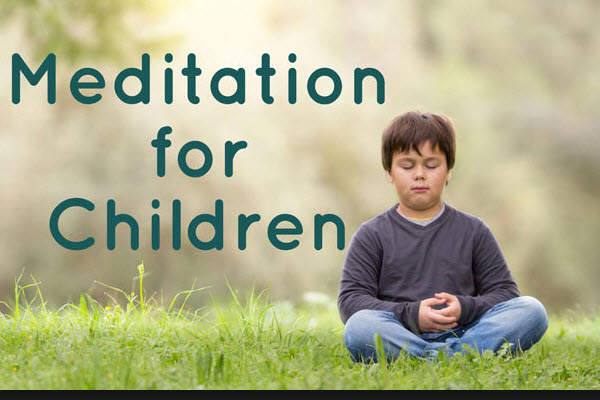A mother researches Mindfulness – a school programme used without parental permission
 Belinda* says:
Belinda* says:
Our local schools are all using the Smiling Minds mindfulness programme at the moment. We have withdrawn our children and I have written the attached report. It contains some information that you already have on your site but also has some more current research.
Here’s her research – which we believe every parent should be aware of.
Concerns Regarding Mindfulness Programmes Being Used Without Parental Permission
Parental permission should be sought before children participate in mindfulness for three main reasons: there is a lack of evidence proving the benefits of participating, there are potential risks involved for students who participate, and there are religious beliefs behind mindfulness that conflict with the beliefs of some families. This paper will first address these three areas of concern, and will then discuss how these pertain to Smiling Minds. Very briefly, it will discuss Go Noodle.
CONCERN 1 – THE CURE-ALL CLAIMS, REGARDING MINDFULNESS, ARE MISLEADING AND NOT BACKED BY ROBUST SCIENTIFIC RESEARCH
There are many claims coming from science, government departments and the media touting the efficacy of mindfulness based programmes to help our young people deal with stress, anxiety, anger; to make them more compassionate and less prejudiced; to increase concentration and focus; even to improve their immune system and slow the aging process.
However, major critical analyses of mindfulness studies show concerning weaknesses in existing research from which such hopeful claims are made. These weaknesses include a lack of randomised control groups, passive rather than active control groups, reliance on pre-post test self-reporting, small sample sizes with large attrition rates, inconsistent definitions of mindfulness and other terms used in studies, very strong bias evident in study methods and reporting, and, of great concern, adverse effects either not collected or reported. Four major meta-analyses are discussed below.
“Contrary to popular opinion, the evidence for even the most ‘well-founded’ benefits of mindfulness is not consistent or conclusive.” – Source
Meta-Analysis 1: Meditation Practices for Health 2007
Prepared by: University of Alberta Evidence-based Practice Center Edmonton, Alberta, Canada.
Investigators: Maria B Ospina, BSc, MSc, Kenneth Bond, BEd, MA, Mohammad Karkhaneh, MD, Lisa Tjosvold, BA, MLIS, Ben Vandermeer, MSc, Yuanyuan Liang, PhD, Liza Bialy, BSc, Nicola Hooton, BSc, MPH, Nina Buscemi, PhD, Donna M Dryden, PhD, and Terry P Klassen, MD, MSc,
The link to the full study is HERE:
The study concluded:
- “Evidence on the state of research in meditation practices was provided in 813 predominantly poor-quality studies.”
- “Many uncertainties surround the practice of meditation. Scientific research on meditation practices does not appear to have a common theoretical perspective and is characterized by poor methodological quality. Firm conclusions on the effects of meditation practices in healthcare cannot be drawn based on the available evidence. Future research on meditation practices must be more rigorous in the design and execution of studies and in the analysis and reporting of results.”
Meta-Analysis 2: Meditation Programs for Psychological Stress and Well-Being: A Systematic Review and Meta-Analysis. 2014
Goyal M1, Singh S1, Sibinga EM2, Gould NF3, Rowland-Seymour A1, Sharma R4, Berger Z1, Sleicher D3, Maron DD4, Shihab HM4, Ranasinghe PD1, Linn S4, Saha S2, Bass EB5, Haythornthwaite JA3.
The study is in full HERE: It is summarized HERE:
- This study reviewed over 18,000 citations and found only 47 randomised clinical trials with active control groups worthy of consideration.
- Using only these high-quality studies it concluded there is only moderate evidence to support the benefits of associated with anxiety and depression and either insufficient evidence or evidence of no effect on positive mood, attention, sleep, eating habits.
- More importantly the study found no evidence that the mindfulness programmes were better than any active treatment. Mindfulness was not better than, for example, exercise.
Meta-Analysis 3: Mind the Hype: A Critical Evaluation and Prescriptive Agenda for Research into Mindfulness and Meditation 2017 Oct 10.
Nicholas T. Van Dam,1 Marieke K. van Vugt,2,† David R. Vago,3,† Laura Schmalzl,4,† Clifford D. Saron,5,†Andrew Olendzki,6,† Ted Meissner,7,† Sara W. Lazar,8,† Catherine E. Kerr,9,†* Jolie Gorchov,10,†Kieran C.R. Fox,11,† Brent A. Field,12,† Willoughby B. Britton,13,† Julie A. Brefczynski-Lewis,14,† andDavid E. Meyer15
Study in full HERE – Summary HERE:
The study found that:
· “Eager journalists and academic press offices, and news media outlets – sometimes aided and abetted by researchers – have often interpreted initial tentative empirical results as if they were established facts.” Pg. 4
· Pre-post studies were frequently used – can changes, from pre to post test, be attributed to the mindfulness, or the teacher, the group setting, the passage of time, the normalization of symptoms, to sitting still after being busy…?
· Most recent research studies use self-reporting questionnaires as a primary assessment of mindfulness in which “social-desirability biases may be especially pronounced…because participants/patients learn to expect/value improved attention, equanimity, and so forth, while experimenters often fail to hide their hopes that participants will grow in their adeptness at theses mental faculties” (pg11)
· “…exaggerated claims about the potential benefits of mindfulness practices” and the “propagation of poor research methodology can potentially lead to people being harmed, disappointed, and/or disaffected.” (pg3)

· The conflation of results taken from studies of experienced Buddhist meditators on months long retreats, with those of participants in time-short app-based programmes “a 5minute meditation exercise from a popular phone application might be treated the same as a 3-month meditation retreat (both labeled as meditation) and a self-report questionnaire might be equated with the characteristics of someone who has spent decades practicing a particular type of meditation (both labeled as mindfulness)”. (pg4)
· “There is a common misperception in public and government domains that compelling clinical evidence exists for the broad and strong efficacy of mindfulness as a therapeutic intervention” (pg. 15)
Caution is advised in drawing inferences from current neuroscience findings as:
· There are overly simplistic interpretations of nuanced neurocognitive phenomena with the result that “meditative benefits may be exaggerated and undue societal urgency to undertake mindfulness practices may be encouraged” (pg22)
· While some neuroimaging data suggest modest changes as a result of mindfulness, “similar changes have been observed following other forms of mental and physical acquisitions, such as learning to play musical instruments and learning to reason, suggesting that they may not be unique to mindfulness.” (23)
· “…considerable variation in how neuroimaging methodologies have been implemented make it difficult to know the neuro effects of mindfulness”
· Potential contributions for confounding variables eg. individuals attracted to meditation may have characteristics that separate them from the general population even before experimentation (pg. 24)
Meta-Analysis 4: The limited prosocial effects of meditation: A systematic review and meta-analysis
Ute Kreplin, Miguel Farias & Inti A. Brazil December 2018
Full Study HERE:
This study was a systematic review of scientific literature behind the claim that meditation, including mindfulness-based meditation, increases pro-sociality. It concluded: “Compared to doing no new emotionally engaging activity, it might make one feel moderately more compassionate or empathic, but our findings suggest that these effects may be, at least in part, the result of methodological frailties, such as biases introduced by the meditation teacher, the type of control group used and the beliefs and expectations of participants about the power of meditation.”
Ute Kreplin, one of the study authors (and of Massey University NZ) discussed and summarized the findings here:
She is quoted below:
- “While meditation made people feel somewhat more compassionate or empathetic,it did not reduce aggression or prejudice, nor did it improve how socially connected one felt”
- The study highlighted a concerning level of bias. Experimenter bias was prevalent – in 48% of studies, the meditation intervention was taught by one of the study’s authors, often its lead authors.
[A clear of example of this is the NZ Pause, Breathe, Smile program. Grant Rix, program author, has his name on every piece of research proving the efficacy of his own work].
- Little attempt was made to control for any potential bias that an enthusiastic teacher and researcher might have had on the participants.
- Compassion increased only in those studies where the author was also the teacher of the intervention.
- “The media buzz around meditation – which portrays it as a cure for a range of mental-health problems, the key to improved wellbeing and to changing one’s brain for the better – is also very likely to feed back to participants who will expect to see benefits from a meditation intervention”
- “many of the researchers, and therefore the reviewers of journal articles, are personally invested in meditation not only as practitioner and enthusiast but also as providers of meditation programmes from which their institutions or themselves financially profit.”
Further Comments Regarding the State of Mindfulness Research
“A careful examination of the research reveals how enthusiastic proselytizing can sometimes be less than mindful of the complexities and caveats involved.” – Robert Meikyo Rosenbaum in Mindfulness Myths: Facts and Fantasies pg. 59
“Something has gone wrong with the science of mindfulness. The literature on its supposed mental and physical benefits is conceptually and methodologically precarious and has been divulged in a sensationalist way. Academic articles describe weak results as ‘encouraging’ and ‘exciting’; popular best-selling books about mindfulness, many of which are written by researchers, are bursting with magical promises of peace, happiness and well-being. The replacement of orange-robed gurus by white-collared academics who speak of the benefits of ‘being in the present moment’ is a powerful social phenomenon, which is probably rooted in our culture’s desire for quick fixes and its attraction to spiritual ideas divested of supernatural elements.” – Has the Science of Mindfulness lost its mind? 2016
“Listen, this new wave of studies on mindfulness is full of disingenuous scientists who are up to their necks in Buddhism”, remarked Jonathan Smith, a 1970s pioneer in scientific research into effects of meditation practice. “Look carefully. Check the control groups they’re using.” From ‘The Buddha Pill: Can Meditation Change You?’
CONCERN 2 – THERE HAVE BEEN CASES OF ADVERSE RESPONSES TO PRACTISING MINDFULNESS
 Adverse responses include: fear, anxiety, traumatic flashbacks, panic attacks, mania, hypersensitivity to light and sound, headaches, loss of emotion, detachment, sleep disturbances, depression, psychosis, increased likelihood of suicidality.
Adverse responses include: fear, anxiety, traumatic flashbacks, panic attacks, mania, hypersensitivity to light and sound, headaches, loss of emotion, detachment, sleep disturbances, depression, psychosis, increased likelihood of suicidality.
These effects can last moments, days, months, more than a decade and are discussed in the articles mentioned in this section.
These negative experiences are known in Buddhist circles as ‘dark nights’. However, “while the positive effects have made the transition from the Buddhist texts and transitions to contemporary clinical applications, the use of meditation for health and well-being has obscured the wider range of experiences and purposes traditionally associated with Buddhist meditation.” – Source
“…mindfulness researchers have generally turned a blind eye to the fact that individuals react differently to meditation techniques – and that these reactions may not always be positive… A cross-sectional study on the effects of intensive and long-term meditation reported that over 60% of individuals had at least one negative effect, which varied from increased anxiety to depression and full-blown psychosis. Qualitative research on mindfulness meditation shows that it may increase the awareness of difficult feelings and exacerbate psychological problems… Meditation techniques, including mindfulness, were originally developed to assist with bringing about a deep change in how individuals perceive themselves, others and the surrounding world. It is then not entirely surprising that a person might experience emotional difficulties as a result. For example, it has been found that after an 8-week mindfulness-based stress reduction (MBSR) course, some participants experienced increased stress and depression.14 One experimental study, which used the Trier Social Stress Test, found that a short mindfulness intervention with healthy individuals led to increased biological stress when compared with an active control group. – Source
A 2017 study, with active control groups, tested the efficacy of mindfulness training in middle and high school students and found “no evidence of any benefit for the mindfulness group at either the immediate post-test or the follow up. In fact, anxiety was higher at the follow up for males in the mindfulness group relative to males in the control group. The same was true for participants with low baseline depression and low baseline weight concerns; mindfulness training led to an increase in anxiety in these individuals over time.”
“Unfortunately, mindfulness teachers (who are currently unregulated) are generally unaware of potential ego-rattling effects, nor possess the mental health training to deal with these situations.” – Miguel Farias
Neuro-imaging that has been reported as positive can also be interpreted negatively: “the hyperconnectivity of the prefrontal cortex and limbic regions may result in affective and autonomic blunting which is characteristic of dissociation. Increased activity in the inferior parietal cortex, a common outcome of mindfulness training, might relate to depersonalisation (disembodiment, loss of agency and self-other/self-world boundaries)…Relaxation-induced panic or anxiety is perhaps one of the most well-documented phenomena with clear relevance to meditation” (Mind the Hype pgs20-21)
Anecdotally negative experiences from even ‘low-dose’ secular mindfulness are easy to find:
https://www.theguardian.com/lifeandstyle/2016/jan/23/is-mindfulness-making-us-ill
https://skepticmeditations.com/2015/06/29/buddha-pill-can-meditation-change-you/
https://tonic.vice.com/en_us/article/vbaedd/meditation-is-a-powerful-mental-tool-and-for-some-it-goes-terribly-wrong
https://nationalpost.com/life/meditation-is-often-thought-of-as-a-pillar-of-wellness-but-for-some-it-has-a-much-darker-side
CONCERN 3. MINDFULNESS IS A RELIGIOUS PRACTICE
 Mindfulness is a Buddhist concept and the seventh step of the Buddhist 8-fold path to enlightenment.
Mindfulness is a Buddhist concept and the seventh step of the Buddhist 8-fold path to enlightenment.
The goal is to train the mind, to become detached from feeling and thought, eventually realising there is no individual self, thus alleviating the human predicament of suffering and ultimately escaping the endless cycle of re-birth, achieving nibbana/nirvana.
Miguel Farias and Catherine Wikholm write in ‘The Buddha Pill:
“[We] haven’t stopped believing in meditation’s ability to fuel change but [are] concerned that the science of meditation is promoting a skewed view: meditation wasn’t developed so we could lead less stressful lives or improve our wellbeing. Its primary purpose was more radical – to rupture your idea of who you are; to shake to the core your sense of self so that you realise there is ‘nothing there’. But that’s not how we see meditation courses promoted in the West. Here meditation has been revamped as a natural pill that will quieten your mind and make you happier.”
Though the Buddhist language around these programmes has been largely replaced with secular terms and made accessible to children, the method is unchanged and the Buddhist worldview and intent, though unexpressed, is implicit. “But what does it mean to “secularize” mindfulness? It boils down to a simple change of vocabulary. Promoters drop the terms “Buddhism” and “meditation” and add the terms “neuroscience” and “scientific research.” Meanwhile, the same practice is taught in both public schools and Buddhist basics classes.” – Source
Quoting Sara Lazar, prominent Neuroscientist studying meditative effects at Massachusetts General Hospital:
“Finally, some of the benefits are probably from a skill called “mindfulness.” This is sort of hard to describe. Most of the time as we walk around, the little voice in our head jabbers away and makes all sorts of comments about our experience. We usually believe that the small voice is “me,” but Eastern philosophy disagrees…The goal of mindfulness meditation is to become aware of that little voice and step back from it, see if you can experience everything in that way, by just watching and listening, without getting caught up in what the little voice might be saying.”
Furthermore, Dr Christopher Willard (PsyD), psychologist and educational consultant, president of the Mindfulness in Education Network states:
“I think my work is primarily influenced by Thich Nhat Hanh, who was really my first exposure to mindfulness. But it has also become clear that a lot of other traditions have so much to offer young people as well—the visualization tradition in Tibetan Buddhism for example, is very rich. Visualization is often a lot easier for those, like young people, with smaller attention spans…. I think basic mindful awareness that Thich Nhat Hanh teaches is most accessible and easily explained…I also believe that with practice, an innate awareness of the eightfold path and other facets of teaching start to arise. We begin to notice when we feel better, and it is usually when we are in accordance with the eightfold path and other laws of the Dharma [teaching, nature of reality], whether we know them as such or not.”
For other examples of researchers and teachers, who work in secular contexts, acknowledging the Buddhist content of their secular work see :
https://www.huffpost.com/entry/mindfulness-stealth-buddh_b_6243036
https://www.huffingtonpost.com/candy-gunther-brown-phd/mindfulness-meditation-in_b_6276968.html
CONCERNS REGARDING CHILDREN PARTICIPATING IN SMILING MINDS AND GO NOODLE WITHOUT PARENTAL PERMISSION
SMILING MINDS:
The same objections discussed above – research quality, the potential for negative responses, and the religious nature of mindfulness – will be applied here to the Smiling Minds programme.
Research Quality and Adverse Effects:
The following report is available on the Smiling Minds website:
Establishing an evidence base for the Smiling Mind Education Program – Preliminary results from a large study conducted by Deakin University and InsightSRC
It can be found in full HERE:
This study contains the same weaknesses as found in the meta-analyses discussed at the beginning of this report. Listen to this recording made for participants in the study: ‘Smiling Minds: Introduction to Mindfulness Meditation and the Research Project’
Experimenter bias is extremely clear. Participants of the study are told that they will feel more calm, relaxed, have increased concentration, perform better academically etc., that they will help Australia by participating and finding out what benefits Smiling Minds gives. This creates a strong social-desirability bias as teachers and children know what they are expected to feel and therefore report. There is no active control group, the control group is a passive wait-list group (pg. 20). Participants and teachers self-report. Negative experiences are not reported on so we don’t know if any occurred. As yet, on the basis of this study, there is no evidence from robust scientific methodology for any positive effects of this program, and definitely not as compared to any other “in the moment” activity like singing, reading, physical activity, painting – things that will have to be edged out of the school day in order to make room for mindfulness. Of further concern, any potential adverse effects are unknown.
Smiling Minds is based on religious practice.
The authors of this programme, Jane Martino and James Tutton, have also authored a book ‘Smiling Mind’. The blurb states: Smiling Mind provides personal insight into the practice of mindfulness meditation. Based on a 2,500-year-old Buddhist practice called Vipassana, mindfulness meditation is a form of meditation designed to develop the skill of paying attention to our inner and outer experiences with acceptance, patience and compassion.
Vipassana, a particular type of mindfulness, is also called insight meditation. Vipassanā is insight into the true nature of reality, defined as dukkha “suffering, unsatisfactoriness”, anatta“non-self”, and anicca “impermanence“, the three marks of existence in the Theravada tradition, and as śūnyatā “emptiness” and Buddha-nature in the Mahayana traditions.
“One form of meditative practice is mindfulness. As with most forms of meditation, mindfulness is derived from Eastern meditation practices specifically those practices that are characterised by open monitoring and awareness of present moment experiences” pg. 14 of Smiling Minds research paper.
The practice of focusing on the breath, the rise and falling of the chest, counting the breath, the “body scan” involved in Smiling Minds exercises (available on the app) are the same as described in Buddhist descriptions of the practice.
A quote attributed to Mark Williams on the Smiling Minds page says: “being mindful means we suspend judgement for a time”. This is how mindfulness in the Buddhist context is described also. Do all parents want their children to suspend their rational judgement for a time? This is a religious way of viewing our thoughts and feelings. In this meditation/guided visualisation) from Smiling Minds, the Buddhist worldview is evident. Thoughts and emotions are viewed from a distance, as not part of oneself. As the narrator says in the ‘Smiling Minds: Introduction to Mindfulness Meditation and the Research Project’ clip, “Thoughts are just thoughts, and they’re actually separate from who we are.” They come and go unevaluated, no thought more or less significant than any other.
Some additional thoughts regarding Smiling Minds:
 Dr Addie Wooten, CEO of Smiling Minds says: In our busy, often highly scheduled culture, children can be overstimulated, pressured and over exposed to media and technology.
Dr Addie Wooten, CEO of Smiling Minds says: In our busy, often highly scheduled culture, children can be overstimulated, pressured and over exposed to media and technology.
As parents and educators, are we wanting children to simply cope with the world as it is, using mindfulness or other tools to attempt to cope, as we continue to over-schedule them, and continue to over expose them to media and technology (even mindfulness apps)? Or do we need to fundamentally change if we are to truly address the causes of stress and improve mental well-being?
Is the rhetoric around these programmes unintentionally conditioning children (and parents) to be anxious about anxiety, stressed about stress, and afraid of their “intense” emotions? Does adding the need to exercise their ‘mindfulness muscle’ to children’s to-do list perhaps exacerbate anxiety? Do all parents want their child’s amygdala to be dulled as they deal non-judgmentally with stress? Emotions, even ‘difficult’ ones can be useful, informative tools, and the amygdala that is involved in the fight/flight response could be life-saving! Rather than being simply observed, stress and anxiety, along with all emotions can be evaluated (and indeed judged)– ‘do I need to put something right with someone I’ve hurt?’, ‘do I need to tell an adult about this situation that doesn’t feel right?’, ‘I was so stressed this morning, if I don’t leave my homework till the last minute, I won’t have this rush next Friday morning’, ‘my friend is sad, I know what that feels like, I can encourage her’, ‘I was feeling very afraid, but I did it anyway and I learnt I am capable, I discovered I can be courageous’, ‘I’m feeling very angry at my friend, but is that fair or am I being impatient?’, ‘I’m feeling less frustrated now that I’ve run around with my friends.’
As parents, we do not enjoy seeing our children experiencing difficult emotions, but we see them as opportunities for our children to learn, grow, make changes, take responsibility and build character.
The argument could be made in response to this that ‘while some children can regulate their emotions and thoughts, Smiling Minds or similar may be needed for those children who are dealing with extreme and unmanageable stress and anxiety.’ If that is a reason for implementation, then the programme is now a clinical or therapeutic one. Is there evidence to suggest it would be effective and safe for those children who really need specialised support, and is the classroom teacher qualified to help? Is it appropriate to be applying a therapeutic tool for a few, broadly to all?
GO NOODLE:
Can our children not do fun, boisterous, physical activity, without having to be ‘mindful’ while doing it? When too much screen time is identified as one of the factors that is causing our children attention, concentration and emotional regulation problems, and when we live in such a beautiful environment, why are we putting our classes in front of screens to ‘mindfully’ exercise?
CONCLUDING THOUGHTS AND QUESTIONS
Because mindfulness is a religious practice, because there is a lack of evidence that the children would not be better off reading a book, dancing, drawing, singing, daydreaming or running and playing, and because there are potential risks involved, we believe that parents (and teachers) should be better informed about mindfulness programmes, and be given the choice to opt in or out.
FURTHER READING: Parental Rights in NZ Regarding “Mindfulness”
https://www.familyfirst.org.nz/2014/10/parental-rights-regarding-mindfulness/
* not her real name






